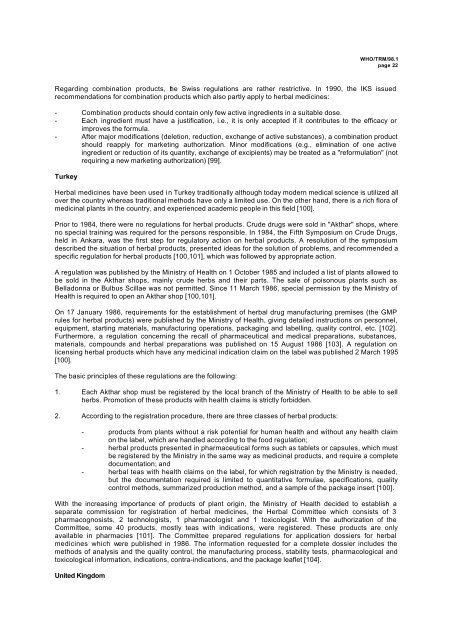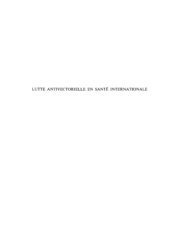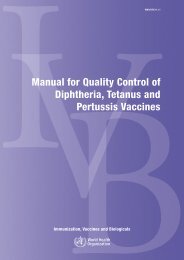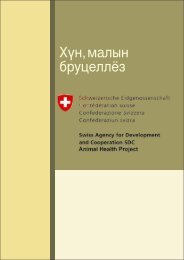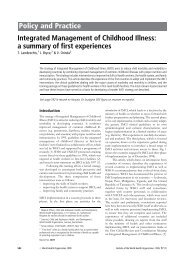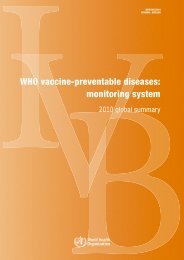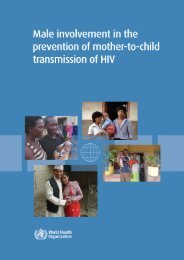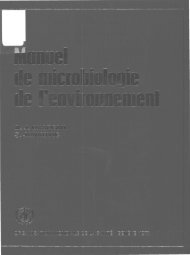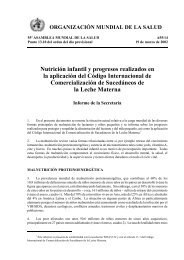Regulatory Situation of Herbal Medicines A worldwide Review
Regulatory Situation of Herbal Medicines A worldwide Review
Regulatory Situation of Herbal Medicines A worldwide Review
You also want an ePaper? Increase the reach of your titles
YUMPU automatically turns print PDFs into web optimized ePapers that Google loves.
WHO/TRM/98.1page 22Regarding combination products, the Swiss regulations are rather restrictive. In 1990, the IKS issuedrecommendations for combination products which also partly apply to herbal medicines:- Combination products should contain only few active ingredients in a suitable dose.- Each ingredient must have a justification, i.e., it is only accepted if it contributes to the efficacy orimproves the formula.- After major modifications (deletion, reduction, exchange <strong>of</strong> active substances), a combination productshould reapply for marketing authorization. Minor modifications (e.g., elimination <strong>of</strong> one activeingredient or reduction <strong>of</strong> its quantity, exchange <strong>of</strong> excipients) may be treated as a "reformulation" (notrequiring a new marketing authorization) [99].Turkey<strong>Herbal</strong> medicines have been used in Turkey traditionally although today modern medical science is utilized allover the country whereas traditional methods have only a limited use. On the other hand, there is a rich flora <strong>of</strong>medicinal plants in the country, and experienced academic people in this field [100].Prior to 1984, there were no regulations for herbal products. Crude drugs were sold in "Akthar" shops, whereno special training was required for the persons responsible. In 1984, the Fifth Symposium on Crude Drugs,held in Ankara, was the first step for regulatory action on herbal products. A resolution <strong>of</strong> the symposiumdescribed the situation <strong>of</strong> herbal products, presented ideas for the solution <strong>of</strong> problems, and recommended aspecific regulation for herbal products [100,101], which was followed by appropriate action.A regulation was published by the Ministry <strong>of</strong> Health on 1 October 1985 and included a list <strong>of</strong> plants allowed tobe sold in the Akthar shops, mainly crude herbs and their parts. The sale <strong>of</strong> poisonous plants such asBelladonna or Bulbus Scillae was not permitted. Since 11 March 1986, special permission by the Ministry <strong>of</strong>Health is required to open an Akthar shop [100,101].On 17 January 1986, requirements for the establishment <strong>of</strong> herbal drug manufacturing premises (the GMPrules for herbal products) were published by the Ministry <strong>of</strong> Health, giving detailed instructions on personnel,equipment, starting materials, manufacturing operations, packaging and labelling, quality control, etc. [102].Furthermore, a regulation concerning the recall <strong>of</strong> pharmaceutical and medical preparations, substances,materials, compounds and herbal preparations was published on 15 August 1986 [103]. A regulation onlicensing herbal products which have any medicinal indication claim on the label was published 2 March 1995[100].The basic principles <strong>of</strong> these regulations are the following:1. Each Akthar shop must be registered by the local branch <strong>of</strong> the Ministry <strong>of</strong> Health to be able to sellherbs. Promotion <strong>of</strong> these products with health claims is strictly forbidden.2. According to the registration procedure, there are three classes <strong>of</strong> herbal products:- products from plants without a risk potential for human health and without any health claimon the label, which are handled according to the food regulation;- herbal products presented in pharmaceutical forms such as tablets or capsules, which mustbe registered by the Ministry in the same way as medicinal products, and require a completedocumentation; and- herbal teas with health claims on the label, for which registration by the Ministry is needed,but the documentation required is limited to quantitative formulae, specifications, qualitycontrol methods, summarized production method, and a sample <strong>of</strong> the package insert [100].With the increasing importance <strong>of</strong> products <strong>of</strong> plant origin, the Ministry <strong>of</strong> Health decided to establish aseparate commission for registration <strong>of</strong> herbal medicines, the <strong>Herbal</strong> Committee which consists <strong>of</strong> 3pharmacognosists, 2 technologists, 1 pharmacologist and 1 toxicologist. With the authorization <strong>of</strong> theCommittee, some 40 products, mostly teas with indications, were registered. These products are onlyavailable in pharmacies [101]. The Committee prepared regulations for application dossiers for herbalmedicines which were published in 1986. The information requested for a complete dossier includes themethods <strong>of</strong> analysis and the quality control, the manufacturing process, stability tests, pharmacological andtoxicological information, indications, contra-indications, and the package leaflet [104].United Kingdom


